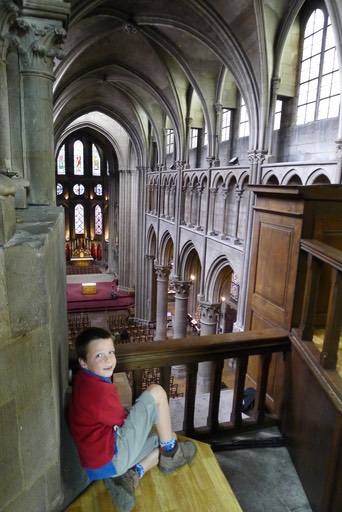News
Photogrammetry at Notre-Dame in Dijon
Yesterday I drove to Dijon with three of my children in tow to do a brief photogrammetric survey of one of the nave bays of Notre-Dame of Dijon. The building has long been part of the story of Gothic structure: it was studied during the Enlightenment for its structural prowess, and transformed, at the hands of Viollet-le-Duc, into a living organism, whose judiciiously arranged skeleton actively countered the thrusts of the vaults. The means of representation, in each case, was the section drawing—drawn not according to accurate survey data, but according to the logic of the argument being presented. The new data will make it possible to see the building as it really is.
Scanning at Beauvais Cathedral
Over the last three days El Mustapha Mouaddib and I (with help from Columbia University graduate student Nicole Griggs) undertook a laser survey of the cathedral of Beauvais. It was an historic occasion: eleven years earlier, almost to the day, Stephen Murray (Columbia University Department of Art and Archeology) and Peter Allen (Columbia University Department of Computer Science) produced the first scan of the cathedral—in fact, the first scan of any Gothic cathedral. The survey, alas, was before its time: the data proved to be so difficult to assemble that it was nearly impossible to use.
In three days we produced over two billion data points with a precision on the order of 3-4 mm, and in over seventy different positions in the building. This was in part thanks to Leica Geosystems's newest laser scanner, the P20, which breaks all records in terms of speed and accuracy.


